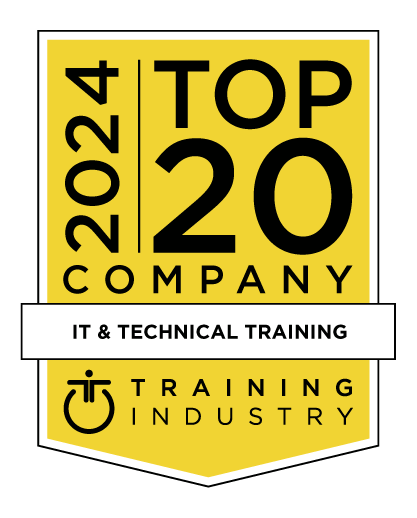title
Please take a moment to fill out this form. We will get back to you as soon as possible.
All fields marked with an asterisk (*) are mandatory.
Securing the Web with Cisco Web Security Appliance (SWSA)
Course Description
Overview
The Securing the Web with Cisco Web Security Appliance (SWSA) course shows you how to implement, use, and maintain Cisco® Web Security Appliance (WSA), powered by Cisco Talos, to provide advanced protection for business email and control against web security threats. Through a combination of expert instruction and hands-on practice, you’ll learn how to deploy proxy services, use authentication, implement policies to control HTTPS traffic and access, implement use control settings and policies, use the solution’s anti-malware features, implement data security and data loss prevention, perform administration of Cisco WSA solution, and more.This course helps you prepare to take the exam, Securing the Web with Cisco Web Security Appliance (300-725 SWSA), which leads to CCNP® Security and the Cisco Certified Specialist - Web Content Security. This course also earns you 16 Continuing Education (CE) credits towards recertification.
Objectives
- Implement Cisco WSA to secure web gateways, provide malware protection, and use policy controls to address the challenges of securing and controlling web traffic
- Gain valuable hands-on skills focused on web security
- Earn 16 CE credits toward recertification
- Describe Cisco WSA
- Deploy proxy services
- Utilize authentication
- Describe decryption policies to control HTTPS traffic
- Understand differentiated traffic access policies and identification profiles
- Enforce acceptable use control settings
- Defend against malware
- Describe data security and data loss prevention
- Perform administration and troubleshooting
Audience
- Security architects
- System designers
- Network administrators
- Operations engineers
- Network managers, network or security technicians, and security engineers and managers responsible for web security
- Cisco integrators and partners
Prerequisites
-
To fully benefit from this course, you should have knowledge of these topics:
- TCP/IP services, including Domain Name System (DNS), Secure Shell (SSH), FTP, Simple Network Management Protocol (SNMP), HTTP, and HTTPS
- IP routing
- Cisco certification (CCENT certification or higher)
- Relevant industry certification [International Information System Security Certification Consortium ((ISC)2), Computing Technology Industry Association (CompTIA) Security+, International Council of Electronic Commerce Consultants (EC-Council), Global Information Assurance Certification (GIAC), ISACA]
- Cisco Networking Academy letter of completion (CCNA 1 and CCNA 2)
- Windows expertise: Microsoft [Microsoft Specialist, Microsoft Certified Solutions Associate (MCSA), Microsoft Certified Solutions Expert (MCSE)], CompTIA (A+, Network+, Server+)
- Web security training resources at https://www.cisco.com/c/m/en_us/products/security/web-security-training.html
Topics
- Describing Cisco WSA
- Deploying Proxy Services
- Utilizing Authentication
- Creating Decryption Policies to Control HTTPS Traffic
- Understanding Differentiated Traffic Access Policies and Identification Profiles
- Defending Against Malware
- Enforcing Acceptable Use Control Settings
- Data Security and Data Loss Prevention
- Performing Administration and Troubleshooting
- References
- Configure the Cisco Web Security Appliance
- Deploy Proxy Services
- Configure Proxy Authentication
- Configure HTTPS Inspection
- Create and Enforce a Time/Date-Based Acceptable Use Policy
- Configure Advanced Malware Protection
- Configure Referrer Header Exceptions
- Utilize Third-Party Security Feeds and MS Office 365 External Feed
- Validate an Intermediate Certificate
- View Reporting Services and Web Tracking
- Perform Centralized Cisco AsyncOS Software Upgrade Using Cisco SMA
Related Courses
-
Implementing Automation for Cisco Security Solutions (SAUI)
CSC-SAUI- Duration: 3 Days
- Delivery Format: Classroom Training, Online Training
- Price: 2,895.00 USD
-
Implementing and Operating Cisco Security Core Technologies (SCOR)
CSC-SCOR- Duration: 5 Days
- Delivery Format: Classroom Training, Online Training
- Price: 4,295.00 USD
Self-Paced Training Info
Learn at your own pace with anytime, anywhere training
- Same in-demand topics as instructor-led public and private classes.
- Standalone learning or supplemental reinforcement.
- e-Learning content varies by course and technology.
- View the Self-Paced version of this outline and what is included in the SPVC course.
- Learn more about e-Learning
Course Added To Shopping Cart
bla
bla
bla
bla
bla
bla
Self-Paced Training Terms & Conditions
Exam Terms & Conditions
Sorry, there are no classes that meet your criteria.
Please contact us to schedule a class.

STOP! Before You Leave
Save 0% on this course!
Take advantage of our online-only offer & save 0% on any course !
Promo Code skip0 will be applied to your registration
Purchase Information
title
Please take a moment to fill out this form. We will get back to you as soon as possible.
All fields marked with an asterisk (*) are mandatory.










